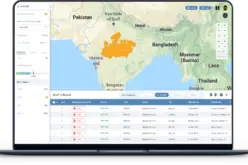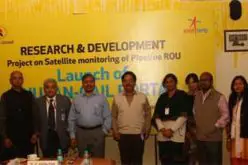India has reaffirmed its commitment to Glacier Preservation at the High-Level International Conference on the International Decade for Action “Water for Sustainable Development” held in Dushanbe, Tajikistan. The Indian delegation, led by Gajendra Singh Shekhawat, Union Minister for Jal Shakti, emphasized the country’s strategic focus on climate resilience using cutting-edge geospatial technologies to monitor and preserve Himalayan glaciers.
In his address, the Minister highlighted how India is leveraging geospatial technology to track glacier retreat, assess changes in glacial lakes, and map snow cover using satellite imagery. These technologies are essential for evidence-based policymaking and proactive disaster management, especially in the wake of growing threats due to climate change.
India’s proactive steps include the use of satellite-based remote sensing and GIS tools for continuous glacier monitoring, which supports water resource planning and early warning systems in Himalayan states. These advancements directly contribute to Glacier Preservation, ensuring the sustainable management of meltwater crucial for millions downstream.
Also Read – Remote Sensing to Detect Horizontal Motion of Glacier Grounding Lines
The Indian government also shared its success through missions like the National Hydrology Project and the GLOF (Glacial Lake Outburst Flood) Risk Reduction initiatives, which use geospatial mapping and modeling. Through these efforts, India is also contributing data and tools to regional collaborations aimed at securing South Asia’s water future.
Calling for strengthened international cooperation, Shekhawat reiterated India’s resolve to balance development and ecology through innovation and knowledge-sharing. “We must build global partnerships that prioritize Glacier Preservation, especially in vulnerable mountain ecosystems,” he said.
India’s engagement at the conference reflects its broader commitment under SDG-6 and SDG-13 and a vision to position Glacier Preservation as central to regional peace, prosperity, and environmental sustainability.
Source: PIB











